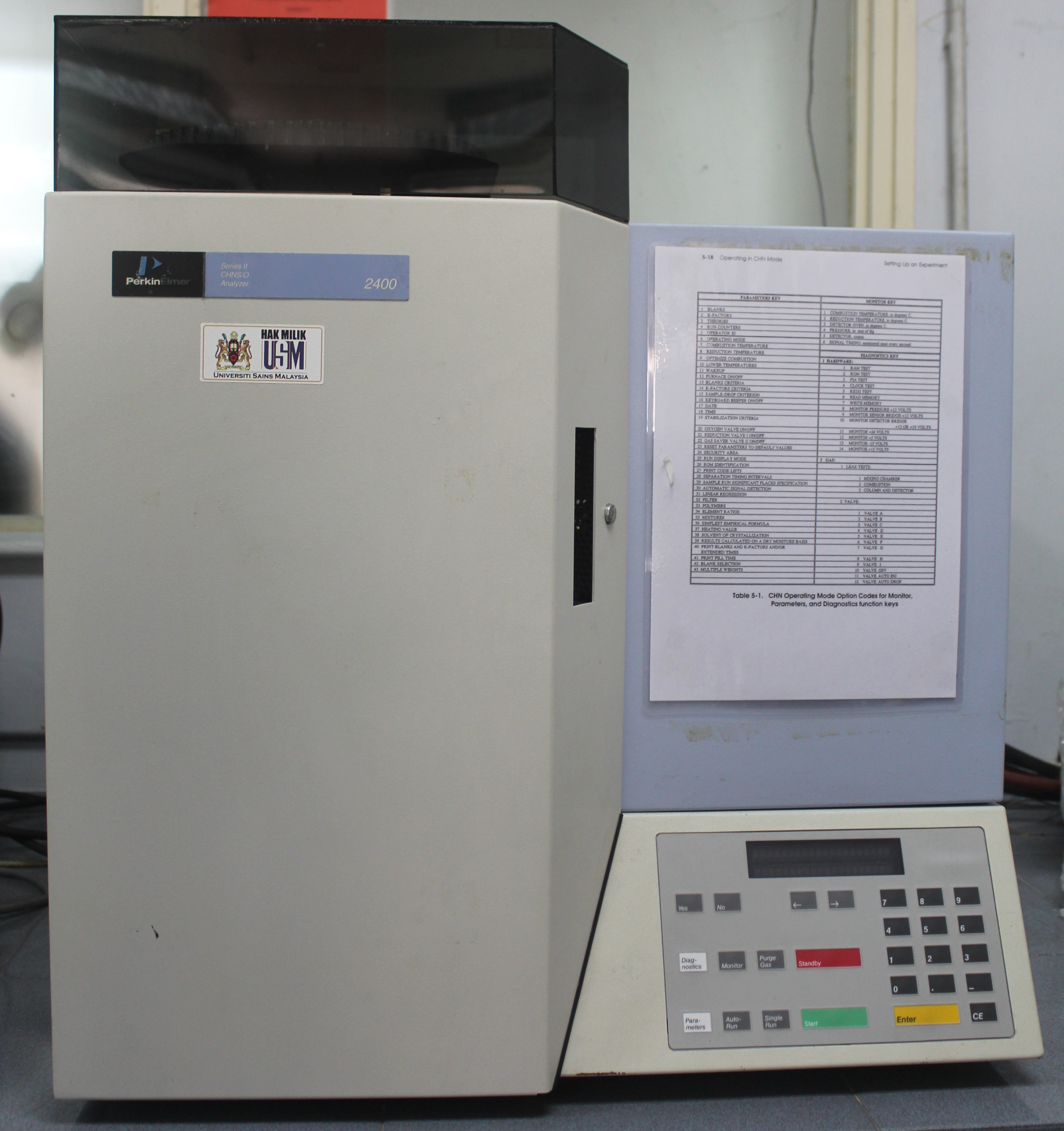


Laboratory Equipment & Services Information System
by Centralized Laboratory Management Office (CeLMO)
CHNSO elemental analysis, also known as organic elemental analysis or elemental microanalysis, determines the amounts of carbon (C), hydrogen (H), nitrogen (N), sulfur (S) and oxygen (O) present in a sample. It is a reliable and cost-effective technique used to assess the purity and chemical composition of compounds and can be used on a wide range of different sample types including solid, liquid, volatile and viscous substances. Knowing the composition of the organic elements also helps analysts to determine the structure of the sample substance. The chemical characterization of organic compounds is used in research as well as for quality control (QC). Elemental analysis is a highly reliable analytical technique that is used in a wide range of applications across many different industries (see below). The most common technique of CHNSO elemental analysis is based on the combustion of the sample. This can be performed in a dedicated instrument known as an Elemental Analyzer. Upon combustion, the sample generates uniform compound gases of the elements C, H, N and S. These combustion products (e.g. CO2, H2O, NO2, etc.) are measured using gas chromatography and thus the ratio of the elements in the original sample is determined. C, H, N and S can all be determined simultaneously whereas O may be analyzed in a second step by pyrolysis
- Manufacturer
- Brand
- PERKIN ELMER
- Model
- SERIES II CHNS/O
- Year Manufactured
- Year Procured
- 2011
- Department
- PUSAT PENGAJIAN TEKNOLOGI INDUSTRI
- Location
- P Pengajian Teknologi Industri > Aras Satu
- Date Registered LESIS
- 18/01/2024
- Category
- Function
- Booking, Testing,
- Category
- Staff operated
- Equipment Status
- Good
Person In-Charge


